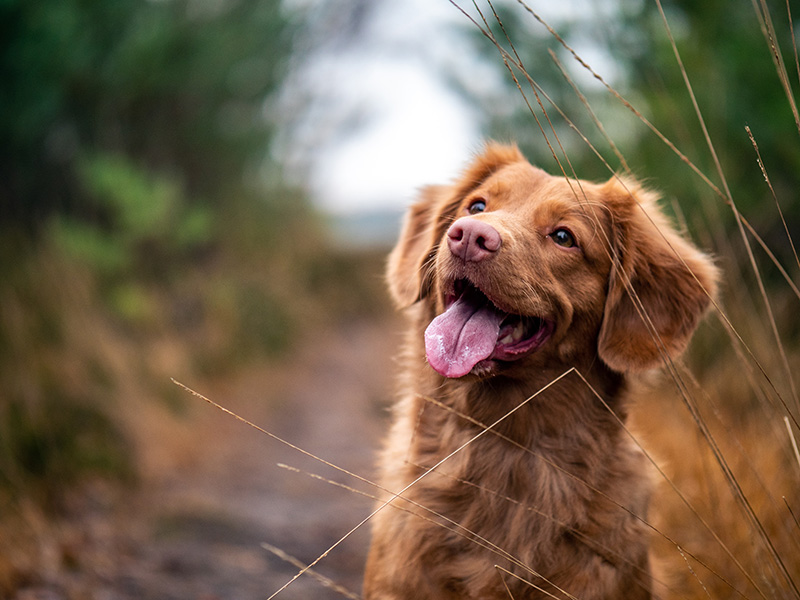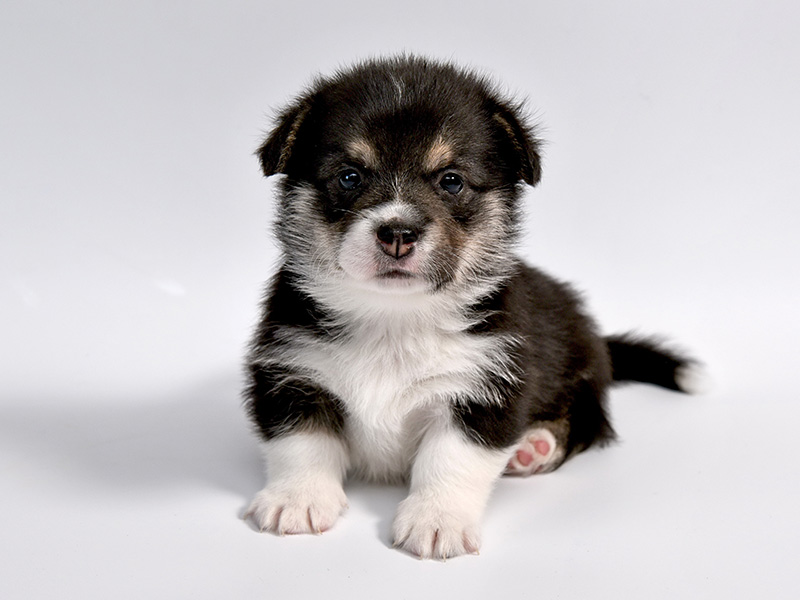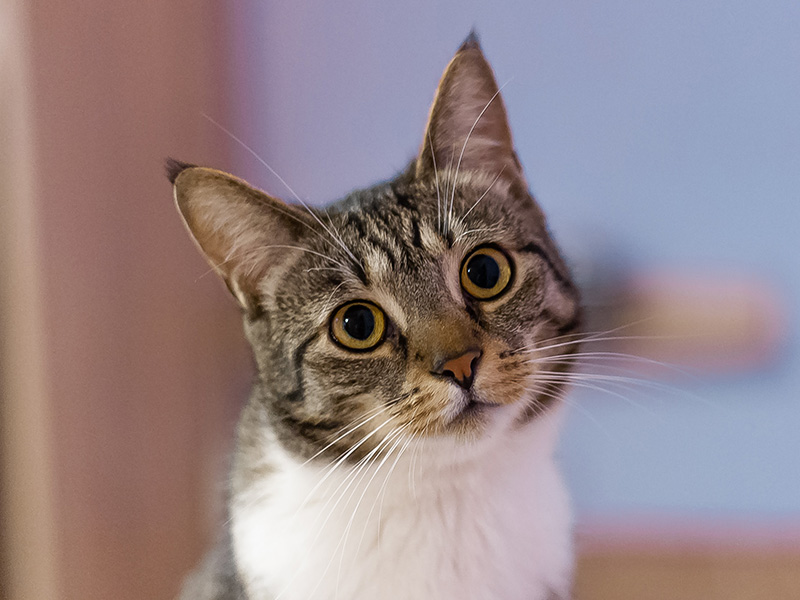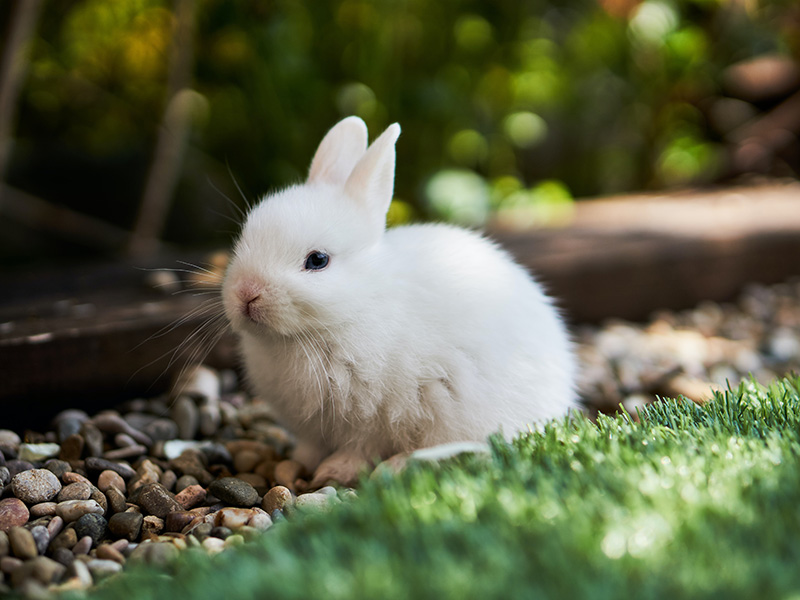Getting A New Puppy Or Kitten
Looking after your puppy/dog
The first weeks of life together will set the pattern for your pet´s behavior in future years.
In their natural environment, dogs live in groups with complex hierarchical social rules. For dogs, communication involves all of the senses (sight, smell, taste, hearing and touch). It represents a blend of instinctive messages, reflexes and more complex learned sequences combining posture, vocalisation and emission. Your pet is unique - an individual moulded by their parents, birth, early environment, time spent with the mother, and all its various experiences of life.
Attachment/detachment
If it is less than 6 months old, then it is going to need someone to replace her. And so it will choose a person who can provide warmth and comfort. It will try to be always as close as possible to this person, whose contact is a source of calm for it. It is vital that this new attachment should be formed, for the pup to be able to set off to discover this new world of yours.
At about the age of 6 months, the time of puberty, you will need to detach your baby dog from you- not that this in any way means ceasing to love it! For this, what you need to do is to make sure that, in the interactions between you and the little dog, the initiative comes from you and not from the puppy. This will enable it to put up with your being absent. This will hopefully help with any potential separation anxiety.
Vaccinations
Primary Vaccination
For the first few weeks of life, puppies are usually protected against disease from the immunity they receive in their mother´s milk. Gradually this protection decreases which is when your puppy will need their vaccination.
Your veterinary surgeon will suggest a programme of vaccinations to fit in with your pet´s particular needs and the local disease pattern.
Annual Vaccination
Many people believe that if they have their pet vaccinated when they are puppies the immunity they receive will protect them for the rest of their lives. Unfortunately, this is not the case. After the last injection, the immune level reaches a peak and then begins to decline. After a year, the level of protection offered to your pet may no longer be sufficient.
Revaccination stimulates the immune response so that protection is maintained for another year. Without these yearly vaccinations, your pet´s immune system may not be able to protect it from serious, often fatal disease.
Your kitten is here
Our two most familiar pets may have the fact of being carnivorous in common, but their behaviours are very different from one another´s. And if you want to make a cat happy, you need to respect its characteristics.
Attachment, socialisation, familiarisation
A cat develops much faster than a dog: where a dog takes about six months to become autonomous, the key period for a kitten to grow up into a well-balanced cat lies in the sixth week of life.
If such a lack of socialisation is making your cat aggressive, do not hesitate to consult your Vet.
Territory organisation
While cats may not always be social animals, they most certainly are always territorial.
Cats will pick an area which they do not wish to share, unless it is extremely familiar with said individuals, and then only when it chooses. It is often a raised position, where the cat can feel perfectly safe.
Right from the very first day, you should give it its safe spot: a place where no-one will come and disturb it when it is asleep.
The children and the dog of the household will quite naturally want to make contact with the new-comer; but, if your kitten is to develop peacefully, it has to have its own private place- which it may later on decide to change.
You should not systematically remove all the marks made by the cat rubbing itself against things in its new home. It is very important for it to be able to find its pheromones if it is not to develop an anxiety state.
Uncleanliness and marking
Cats are toilet-trained from very early on, and one is often struck by the sight of a little kitten three weeks’ old struggling to get up into its cat-litter to relieve itself there.
The cat-box with the litter in it needs to be constantly accessible, including at night. Remember that cats are originally nocturnal animals. Living with humans means they may focus on daytime activity, but they still may well keep certain times during the night for specific occupations so ensure they can go to toilet at any point.
The litter should be changed frequently.
Finally, do not confuse uncleanliness and marking.
Some cats use urinary marking, and the sequence here is highly characteristic. The cat stands up straight on its legs, rather than crouching down as it does to relieve itself, and sends shots of urine on to vertical supports. This is highly typical of a cat whose territory has been disrupted and who is failing to find its familiarity landmarks.
As between uncleanliness, elimination and marking, the easiest and most effective thing to do is to talk with your Vet about it right away.
Playing and hunting
No doubt being more naturally a predator than dogs are, cats need to play, miming hunting and predation.
A lack of stimuli and of imaginary prey can cause the animal to show aggression to the sole mobile features to be found in its environment: viz., its owners´ feet and hands. If you encounter this problem- especially with a cat living in what is a favorable environment- do not hesitate to speak about it with your Vet.
Getting a rabbit?
Rabbits can make very good pets, but they have some important needs that must be addressed in order to provide appropriately for their health and welfare. As well as social interaction with other rabbits, they also enjoy being friendly with humans too. They need to be given attention every day and require regular gentle handling to establish and maintain a social bond, although this must be on their terms.
What you will need to be aware of:
- A suitable environment. A hutch on its own is not enough! They should have a secure, well insulated and ventilated hutch providing plenty of room to move around and stretch out, ideally a minimum size of 6ft long by 2ft wide and 2ft high or with enough space to fully stand up in, whichever is the smaller. This provides a sheltered space for rabbits to use as their base, and they should ideally have constant access to a grass run area which is a minimum size of 8 feet by 4 feet, alternatively a minimum access of 4 hours per day. Indoor rabbits need the same space allocation and may be enclosed within a pen or run, alternatively they may have free run of a room as space to run around helps to provide exercise.
- A suitable diet. Rabbits are strict herbivores and spend a lot of time eating. It is best to give them a diet consisting mainly of hay, fresh, or dried grasses (approximately 85%). Approximately 10% of the diet may be made up of green leafy vegetation, and approximately 5% (about an egg cup full for an average sized 2.5kg rabbit) of good quality extruded pelleted concentrate food. Ensure ad-lib, or unlimited, good quality hay, plus these other components. Water should be provided at all times, via a water bottle, clean bowl, or both.
- Interaction with other rabbits, in compatible pairings or small groups. Rabbits are social animals, and solitary confinement is unnatural to them. To avoid rabbits breeding like, well, rabbits, and to prevent potentially fatal uterine cancer in the females, both sexes should be neutered.
- They should be vaccinated, treated for any parasites as directed by your veterinary surgeon, and regularly (daily), checked for any signs of ill health by their owners. Regularly checking the teeth, ears, skin, claws and underside, around the back end, in particular, are vital.
There are several signs that your rabbit may be ill and require veterinary attention. Among these are:
- loss of appetite
- weight loss
- looking depressed
- skin trouble
- runny faeces and/or urine soaking into the back legs
- discharges from the nose, eyes or mouth
- difficulty breathing




